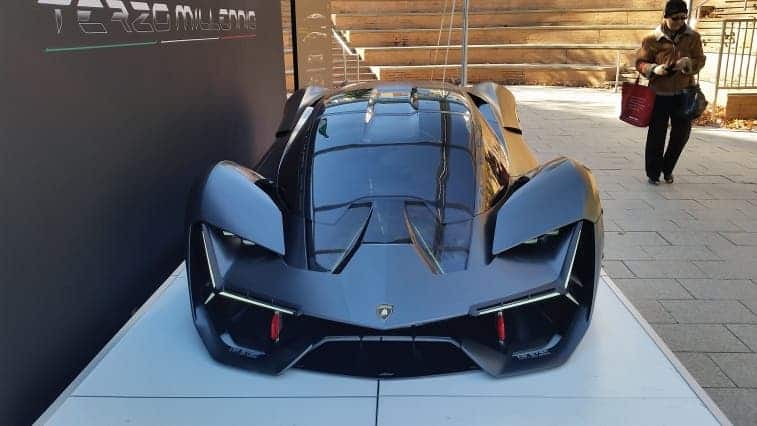The future is here — and it’s driving a fantastic car.
In a time when cities are getting more and more crowded and the bulk of research seems to be aimed at making cars more sustainable and smart, the good old fashioned sports car seems to have lost some of its identity. Tesla Motors changed all that with the Roadster, an electric car that manages to stand its own against the sleekest and fastest of cars. Now, Lamborghini wants to take things to the next level. They teamed up with MIT engineers to create a prototype for the Terzo Millenio (the Third Millenium), an electric, self-healing car which can deliver high peak power and regenerate kinetic energy.
Lamborghini will provide the sweet set of wheels and the technology they have developed so far, while MIT boffins such as associate professor of chemistry Mircea Dinca will ensure its ability to harvest and save energy while safeguarding the high standards Lamborghini drivers have gotten used to.
“The new Lamborghini collaboration allows us to be ambitious and think outside the box in designing new materials that answer energy storage challenges for the demands of an electric sport vehicle,” says Dinca. “We look forward to teaming up with their engineers and work on this exciting project.”
Interestingly, the Terzo Millennio wants to get rid of batteries and instead use supercapacitors to store energy. Supercapacitors are high-capacity capacitors with extremely high capacitance values but lower voltage limits — i.e. they can store a lot of electrical energy on relatively low “pressures”, meaning it can be hard to push it down long circuits. Simply put, this makes them suitable for many rapid charge/discharge cycles rather than long-term compact energy storage. Supercapacitors also help with regenerative braking — an energy recovery mechanism which slows a vehicle or object by converting its kinetic energy into electrical energy which can be later used to fuel the car. The technology fits with the idea of a powerful electric car, but presents significant autonomy challenges.
Lamborghini also wants to revolutionize the engine concept, to offer even more power and freedom of design. Instead of having just one engine and send the power to the wheels, they want each wheel to have its own engine. This, says Lamborghini, allows for lots of torque and moving energy by wire instead of a cumbersome and heavy driveshaft.
The car will also use technology developed by John Hart, associate professor of mechanical engineering, who will work on the carbon fiber and composite materials which could enable the complete body of the car to somehow be used as a battery system.
It’s an intriguing, exciting concept which promises to revolutionize cars, but it remains to be seen whether this will be anything more than an interesting concept. Still, either way, the sports car seems to be getting back some of its identity.










